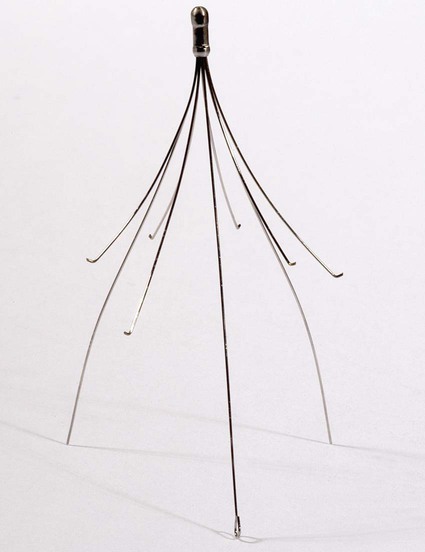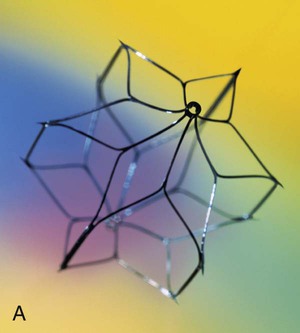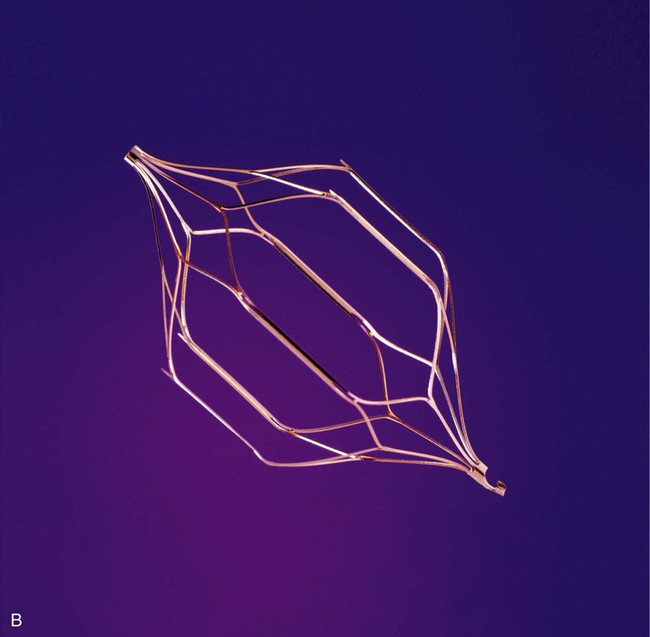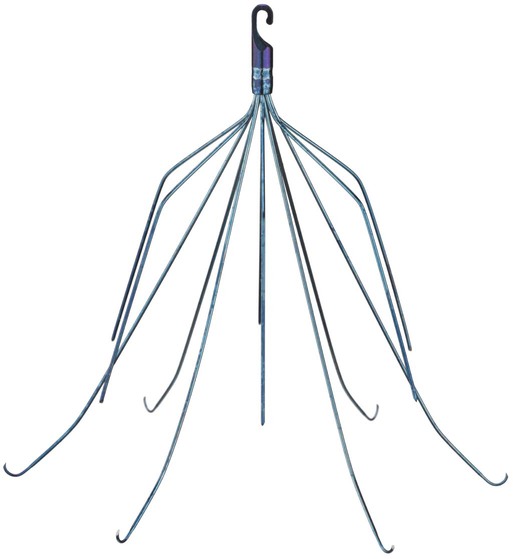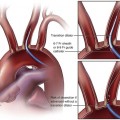Chapter 12 The ALN filter was launched in Europe in 1999 and received U.S. Food and Drug Administration (FDA) approval in 2008. This filter is cone shaped and consists of six arms with a hook at the end to prevent migration and three legs of different lengths for good centering. The ALN filter is made of 316L stainless steel. The filter comes in either a jugular (yellow color) or femoral (green color) cartridge. The filter can be pushed out of the cartridge into a 7F-inner-diameter (ID) sheath for placement. The ALN filter is approved for a caval size up to 28 mm. The list price in the United States is $1550 (Fig. e12-1). Retrieval is performed from a jugular approach, with a dedicated removal kit that consists of a claw of eight struts. The claw is closed over the filter tip by advancing the 9F introducer sheath over the claw, then the filter can be removed by pulling it into the sheath. Because there is very little contact between the filter and the caval wall, the filter can be removed even after long dwell periods of 6 months and longer.1 TrapEase, introduced in 2000 to the U.S. market, is basically an elongated nitinol basket (Fig. e12-2, A). The length of the filter depends on the expansion of the filter and varies between 50 mm fully expanded and 62 mm when expanded to 10 mm. The actual expansion depends on the diameter of the IVC. The filter provides a two-level filtration, with the top of the basket acting as a cone and the bottom acting as a reversed cone. There is some concern about a possible increased caval thrombosis secondary to the reversed-cone shape of the lower end of the filter.2 The filter is centered within the IVC by six longitudinal struts. At the end of each strut, there is a small vertical hook preventing cranial and caudal migration. These hooks prevent the filter from being retrieved on a routine basis. The TrapEase filter was modified for retrieval by adding a hook at the bottom of the filter and removing the hooks pointing caudally. The retrievable version is called OptEase (Fig. e12-2, B). Because of the symmetrical design of the TrapEase, the filter can be placed from either direction. The OptEase filter has to be placed with the hook pointing caudally so that the hooks at the opposite side prevent cranial migration. With its small 6F profile, access from an antecubital vein has been described using a 6F sheath.3 For the antecubital approach, an extra-long delivery sheath of 90 cm is available. The OptEase filter is the only filter that is retrievable from a femoral approach, so it is the ideal optional filter when no upper extremity or neck veins are available. Any snare can be used for the retrieval procedure. Because of the extensive contact of the filter with the IVC wall, successful retrievals are reported commonly after short dwell times (within 14 days).4 The Eclipse filter is a further development of the original Bard Recovery filter made of nitinol. In between, there was the Recovery G2 filter, which had increased strut strength and longer arms. The G2X had an additional hook at the top of the filter. The new feature of the Eclipse filter is the electropolished nitinol wire. The Eclipse filter is a cone-shaped filter consisting of six arms and six legs (Fig. e12-3). The arms and legs provide a two-level filtration. The leg span is 40 mm (compared with 32 mm of original filter), and the arm span is unchanged (33 mm). The increased leg span, together with the increased thickness of the hooks (0.0105 inch up from 0.0085 inch), is intended to further decrease the chance of cranial migration. The length of the arms was increased from 12 to 18.5 mm to prevent filter tilt. A special feature of the filter is the superelastic hooks at the end of each leg. These hooks hold the filter in place and prevent migration, but in case of a retrieval, the hooks can be elongated, allowing retrieval of the filter easily even after long dwell times. Safe and uncomplicated retrievals have been reported beyond 120 days with the original Recovery filter.5
Inferior Vena Cava Filters
Inferior Vena Cava Filter Devices
ALN (ALN International, Miami, Fla.)
TrapEase and OptEase Filters (Cordis Corp., Miami Lakes, Fla.)
Eclipse Filter (Bard Peripheral, Tempe, Ariz.)
Inferior Vena Cava Filters

